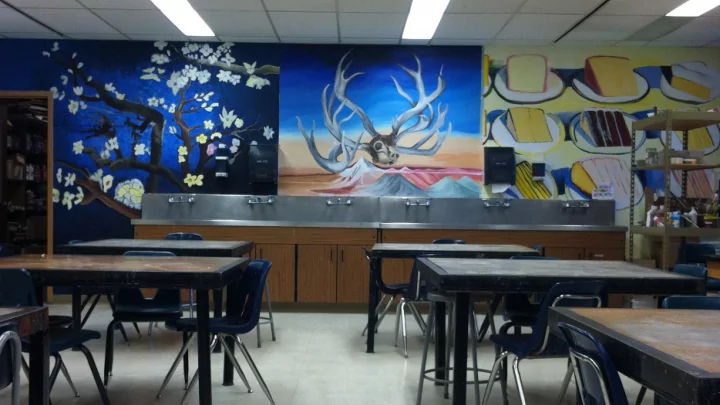

Next Generation Science Standards http://nextgenscience.org/hsls1-molecules-organisms-structures-processes Common Core Built around Math and Language Arts http://www.corestandards.org/ELA-Literacy/RST/9-10/ http://www.corestandards.org/ELA-Literacy/CCRA/SL/ National Art Standards http://nationalartsstandards.org/
STEM vs. STEAM People who use widgets vs. people who invent , improve , persevere , and problem solve Cross-curricular integration It’s inherent in so many areas Art Integration vs. Art in the service of … Mareika’s Frankenstein example vs. pipe cleaner models
Blind Contour Drawing Why is this a useful exercise in art? To what neuroscience topics could you relate this activity?
Question: Does an arts integrated curriculum approach have a measurable effect on students' understanding of three concepts (see below) that underlie both art and science? Uniting Concepts: 1) Scientific and artistic inquiry processes are creative and collaborative, involving multiple ways of investigating a question or problem. 2) Ideas are shaped by the way we represent them and personal experience. 3) Reflection is when we examine what we think we know. These three concepts touch on process, communication and thinking skills that are part of both art and science epistemology.
Learning Outcomes Tied to the uniting concepts, these will guide your curriculum development. Student-centric and focused on a relevant, achievable, measurable goal. The following learning outcomes are a framework on which you can hang your own actual projects and content (numbers in parentheses reference uniting concepts): A. Students analyze course content and create images using visual and verbal vocabulary, and metaphor. (2, 3) B. Students generate experiments and produce works of art exploring a personally meaningful theme, idea, or concept tied to course content. (1, 2) C. Students hypothesize and communicate ways in which art influences perception and understanding of human experience. (1, 2, 3) D. Students select work for public display based on criteria they have specifically developed. (1, 3)
Why assess? As the teachers on the ground, you’re in the best position to evaluate/assess. We’re NOT grading students, sharing assessments with students, nor judging students. Rather, by evaluating whether students achieve, you’re assessing the success or failure of a given project and implementation approach, which helps inform future teaching. Reflection Helpful for educators ( you! ), helpful for us, helpful for getting grants.
How to evaluate student learning without a lot of headache … Rubrics 3 step: Excelling 3 ✓ + Consistently demonstrates … Proficient 2 ✓ Frequently demonstrates … Emerging 1 ✓ - Begins to demonstrate … Brief observational narrative, supporting or providing additional information Based on YOUR projects, YOUR learning outcomes
What we’ll be doing … Additional site visits/observations, building on your data Using data for future grants to support future years of the program Comparing data across years to show improvement in programming
Recommend
More recommend